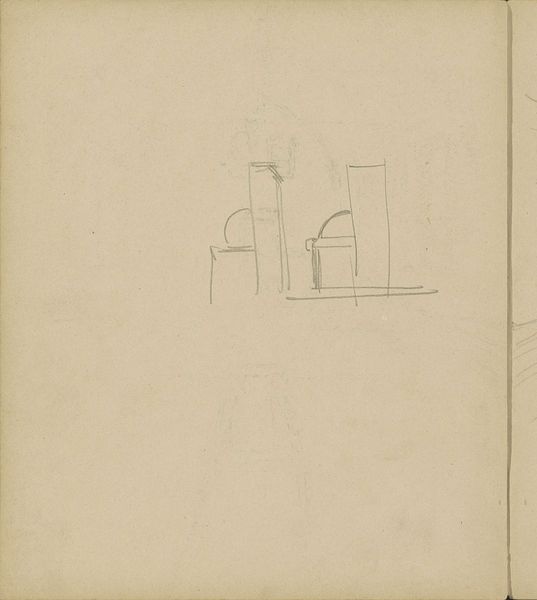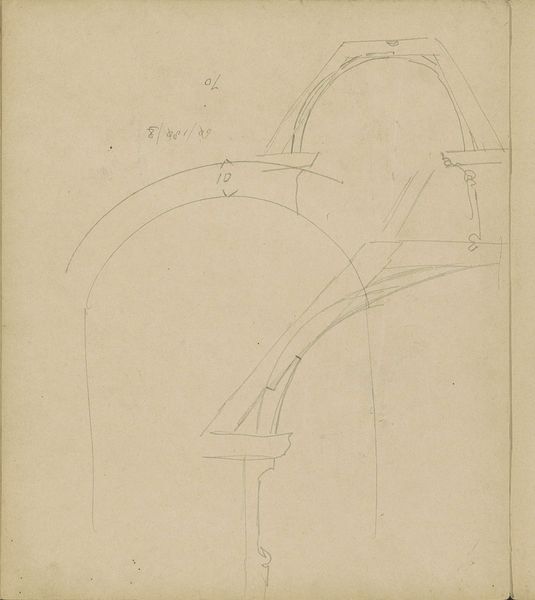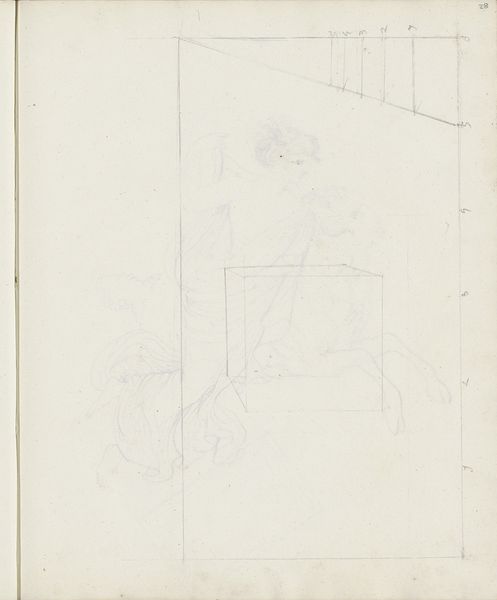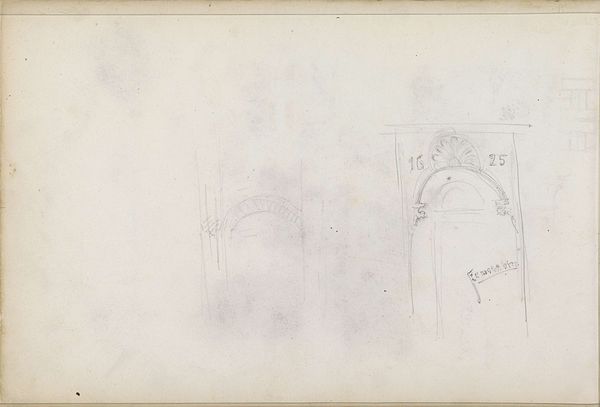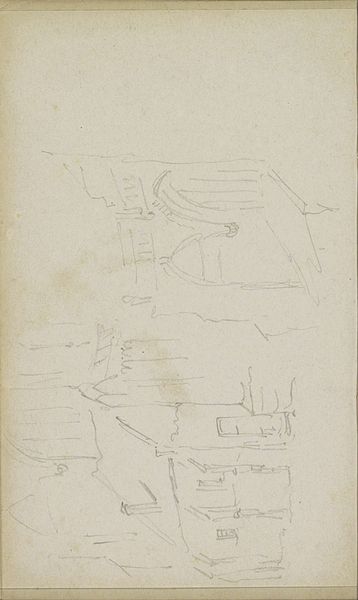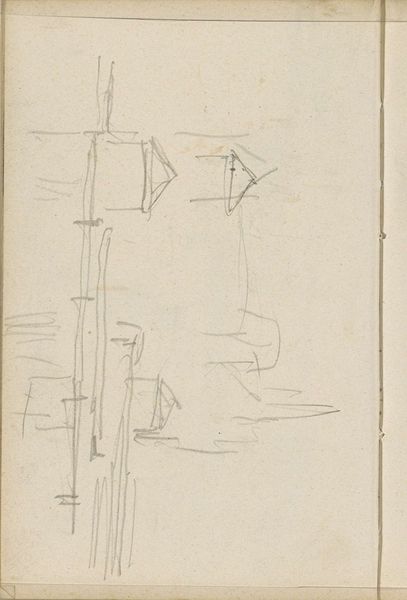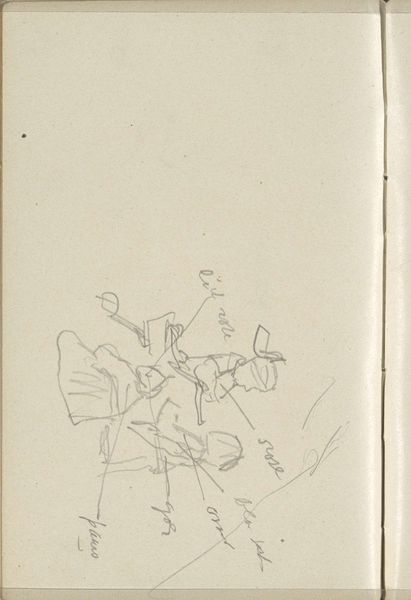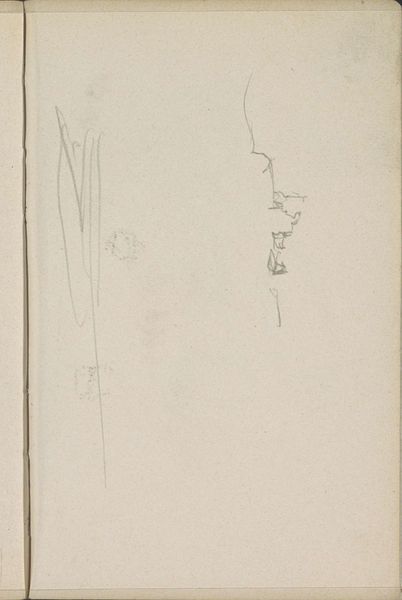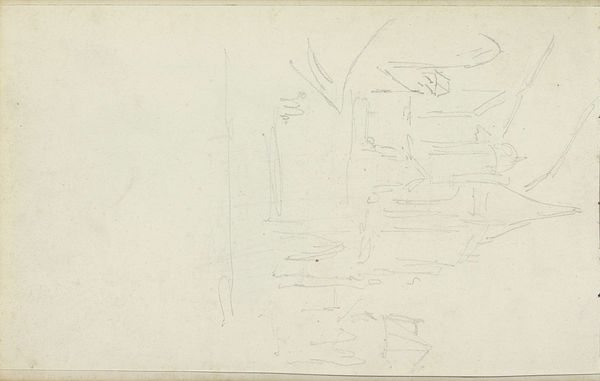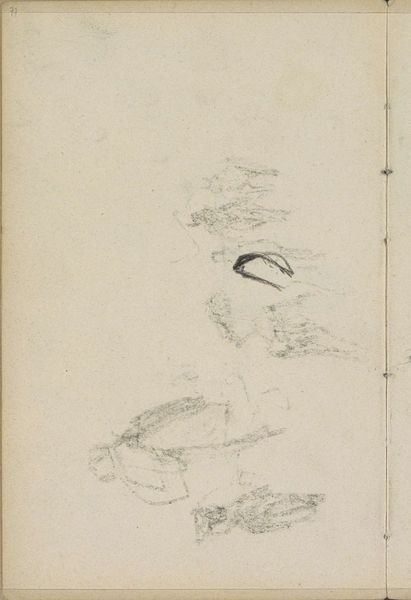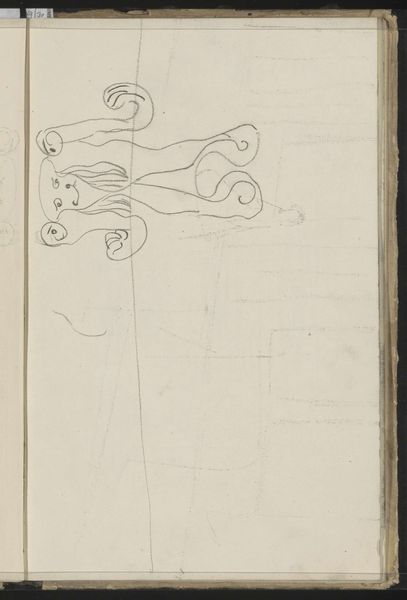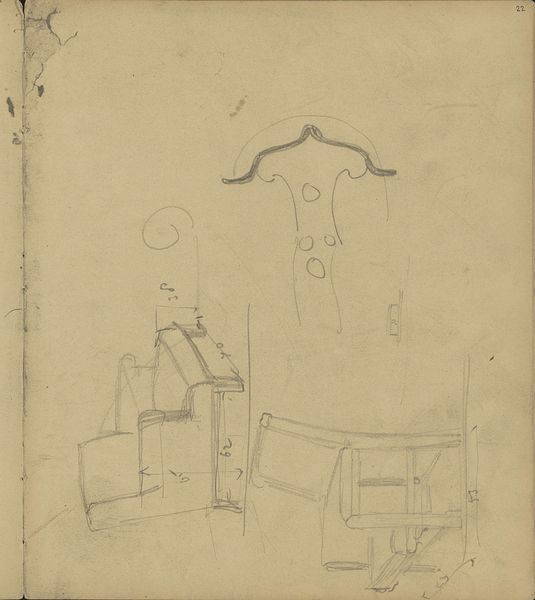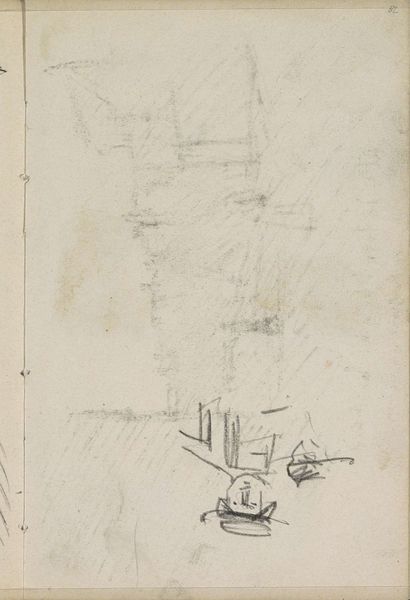
drawing, pencil
#
drawing
#
form
#
geometric
#
pencil
#
arch
#
line
Copyright: Rijks Museum: Open Domain
Editor: Here we have "Twee bogen," or "Two Arches," a pencil drawing by Carel Adolph Lion Cachet, dating back to around 1905 or 1906. The simplicity is striking – it feels like a fleeting thought captured on paper. What stands out to you as you look at it? Curator: What strikes me is the context of architectural representation at the time. The early 20th century saw a real debate about the role of architectural drawing – was it purely technical, a means to an end for construction? Or could it be art in itself, worthy of display? Editor: So, this drawing might have been part of that discussion? Curator: Precisely. Cachet's loose, almost sketch-like style pushes against the highly precise, technically-focused architectural renderings favored in academic settings. By focusing on form and line rather than strict accuracy, he might have been advocating for a more expressive and subjective role for the architectural sketch. It questions who art is "for." Editor: I see! It's like he's capturing the essence of the arches rather than documenting them. What about the social implications? Curator: Well, architecture has always been tied to power and social structures. Who commissions buildings, and who has access to them? Consider that Cachet’s study of form abstracts those societal functions and asks us to consider how architecture functions outside a mere "shelter" and enters a realm of art. By drawing these arches, he perhaps wanted the viewer to pause, observe, and perhaps consider this building in a different light. Does this make sense? Editor: That's fascinating. I hadn't considered the politics inherent in something as seemingly simple as an architectural sketch. It changes the way I look at the drawing completely! Curator: Indeed, thinking about art in terms of its historical and cultural implications provides greater meaning beyond what's visibly depicted on the canvas. Editor: Exactly! It really highlights how art isn't created in a vacuum, and is reflective of certain conditions of labor and its cultural significance. Curator: I agree. We are definitely now seeing the arches, and the context they’re drawn from, more clearly.
Comments
No comments
Be the first to comment and join the conversation on the ultimate creative platform.
